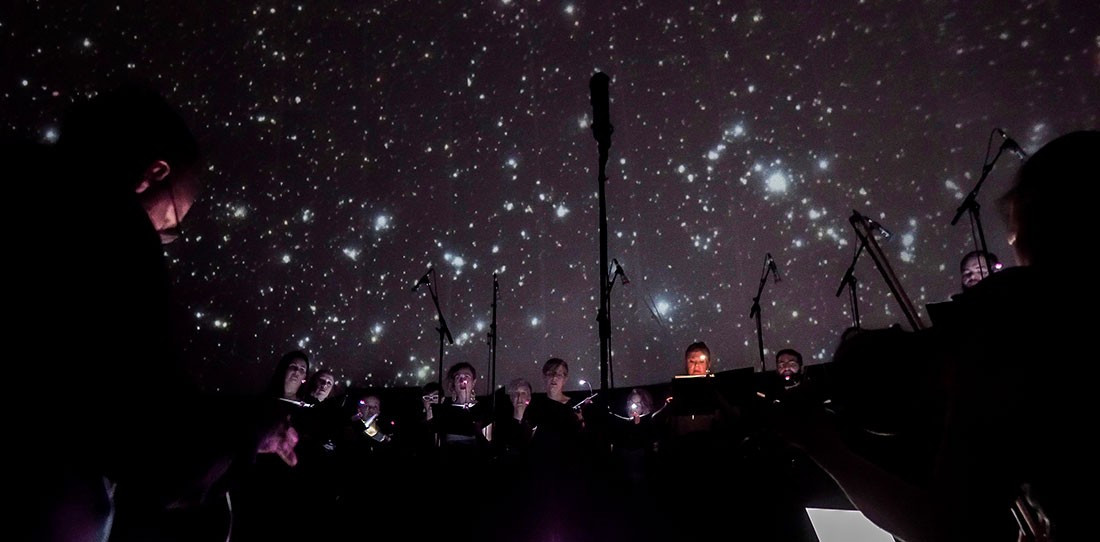Winnipeg from A to G#
A look at the classical music scene in Winnipeg
When Winnipeggers think of their city, the first thing that comes to mind is likely not classical music. They might think of a certain Golden Boy or an occasionally successful professional hockey team, because what more could a city ask for?
Closer inspection shows that Winnipeg is home to much, much more, such as its classical scene that is vibrant, diverse and thriving. In addition to being home to professional orchestras, Winnipeg contains numerous smaller classical music organizations.
One such group is Polycoro, a professional chamber choir founded in 2015, which is known for their innovative programming and immersive concerts. Their performances often involve, according to their website, “submerging audiences in a multi-sensoral musical landscape” that include things like a concert in the Manitoba Museum’s planetarium.
“There are a lot of new projects starting up all the time, which is really exciting,” Zohreh Gervais, executive director and soprano of Polycoro, says.
Zohreh Gervais, the executive director of Polycoro chamber choir, also performs with the group as a soprano. // Photo by Daniel Crump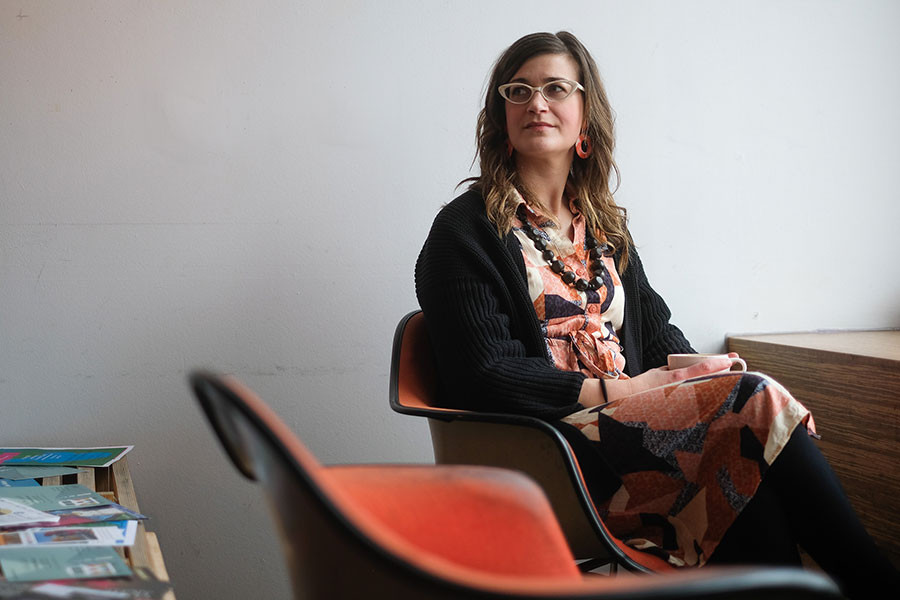
Polycoro’s next concert, occuring on Apr. 22, features a collaboration with European vocal group Ensemble Non Pareilhe.
Challenges and opportunities
Like many arts organizations, classical music groups face a variety of challenges as well as rewarding opportunities. Government funding is often unreliable and subject to frequent cuts.
Nevertheless, there are numerous thriving classical music organizations in Winnipeg.
“This is kind of a blessing and a curse, but there’s so much happening all the time that it’s actually hard to find dates to book concerts when there aren’t any (other) concerts going on,” Gervais says.
For Conrad Sweatman, director of marketing and communications at the Manitoba Chamber Orchestra (MCO), Winnipeg has strong classical music institutions, which is a marker of metropolitanism.
“Winnipeg is big enough to support a classical music community, but it’s small enough that I don’t feel that our institutions are too disconnected from the general public,” he says.
Equally as important as the performer-audience relationship is the relationship between performers.
“This is such a small city that pretty much most of the musicians that work in an organization work in another organization,” Gervais agrees.
“For the most part, people are very willing to work together and to support each other,” she says.
Naomi Woo, the WSO’s newly appointed assistant conductor, moved to Winnipeg in September 2019 and says “I’ve been consistently really impressed by not only the quantity of classical music happening in this city, but also really the quality.”
“One of the things that is so telling of the vibrancy of music in a city like this is that there is so much music happening outside of the big institutions.”
Lesser-known concert series like GroundSwell (which focuses on new music) and the Winnipeg Chamber Music Society (which focuses on chamber music) give audiences the possibility of experiencing a wide range of music.
In addition to Woo’s role with the WSO, she is also the conductor of the U of M Symphony Orchestra and music director for Sistema Winnipeg, a music program for disadvantaged children.
“These are three extremely different but extremely rewarding positions that showcase three different sides of classical music in Winnipeg, from the earliest education to the very highest level of play,” she says, adding that “you need all these components to have a diverse and rich community.”
“It's important to educate people about what the music is about ... Everyone will have a different experience and interpretation of a piece of music, and that's what's so exciting!” - Naomi Woo // Photo by Daniel Crump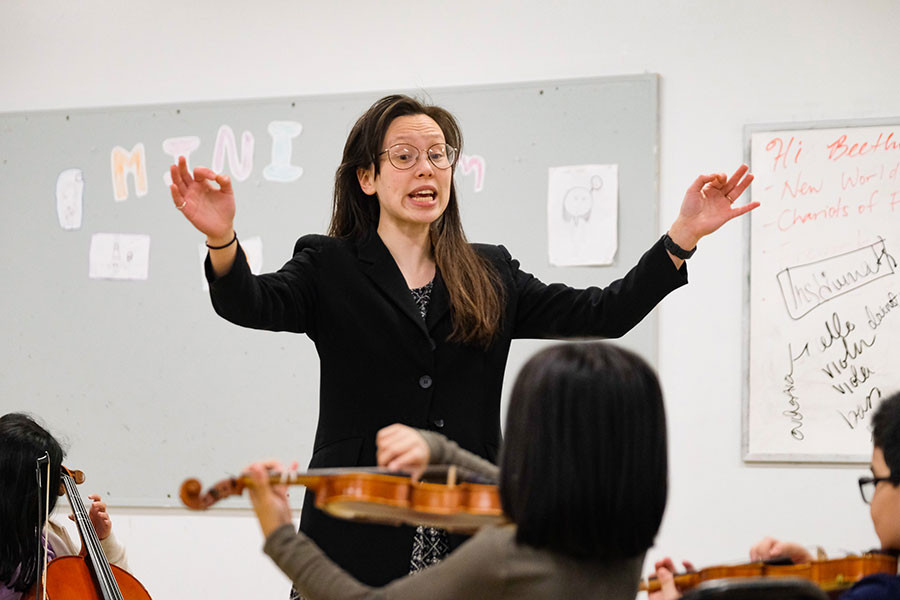
The Sistema program, an important aspect of the WSO’s community outreach, “delivers musical training to children after school for three hours a day, five days a week, at no cost to their families,” according to their website.
Woo describes her experience so far at the helm of this program as “rewarding.”
“At least one thing will happen every day that will totally melt my heart (and) remind me why I do this job and why music is so powerful,” she says.
Education, of course, is a key component of arts organizations’ mandates. This includes the broader public.
“It’s important to educate people about what the music is about,” Woo says.
“At least one thing will happen every day that will totally melt my heart (and) remind me why I do this job and why music is so powerful.” - Naomi Woo // Photo by Daniel Crump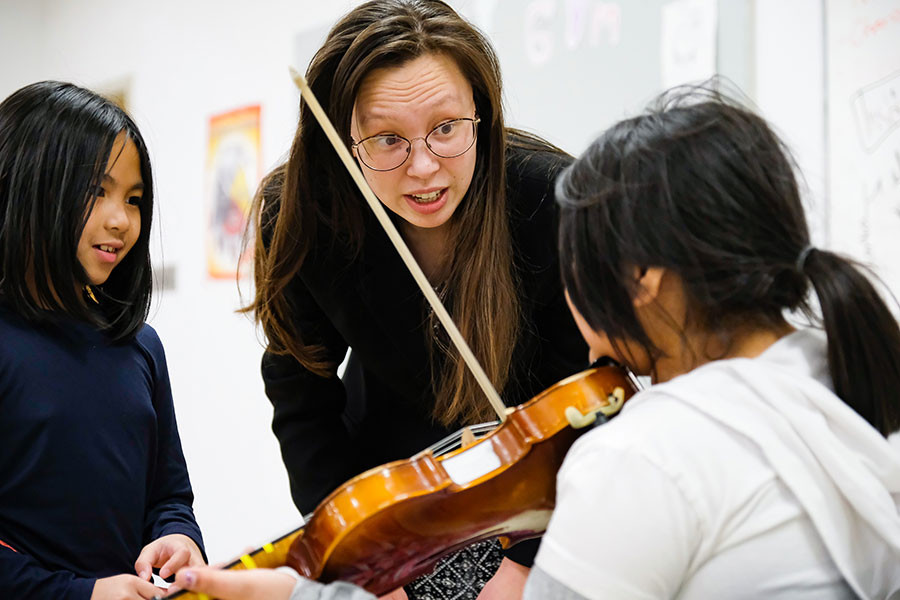
“Not because you need to know the facts, but because sometimes a little bit about the composer or the context can help you empathetically imagine what was going on in their head when they were composing and then (translate) that into your own experience.
“Everyone will have a different experience and interpretation of a piece of music, and that’s what’s so exciting!”
What to play?
A significant dilemma that classical music organizations face is how they should program works.
Historically, audiences have come to expect groups to perform the canon of “great” works that solidified in the 19th century. These include compositions by composers like Bach, Mozart and Beethoven.
However, there have been recent pushes for organizations to program works by more modern, diverse and underrepresented composers, as well as expanding the definition of “classical music.” Interestingly, these lesser-known works sometimes further dissuade audiences.
For Sweatman, the danger with trying to think about how to reconcile different traditions in a multicultural society is that it can sometimes seem like a gimmick.
However, he points to a recent MCO concert featuring a work by composer Dinuk Wijeratne, which drew inspiration from the Tamil language.
“It earned a standing ovation, and that can be difficult to do with a piece of new music. Some people think that if you’re not playing Mozart, it must be elitist, because contemporary music can be difficult,” Sweatman says.
He notes that the Wijeratne show “was populist in the best sense, and everyone who went was so glad they came,” adding that “without diversity and collaboration, there isn’t innovation.”
“It’s always in the best interest of artists and organizations to devote a substantial part of the energy towards doing new, interesting work that does involve collaborations with others.”
Likewise, Gervais says that, at Polycoro, they focus on “interdisciplinary works,” and she’s “really interested in how the arts can influence each other and how music can be a means of producing other kinds of art.”
“Sharing a piece of music when you’re in a space with other people, there’s a really special kind of connection that happens there,” Gervais says.
“Classical music, because it’s not as processed (as other types of music), it ties into these super universal feelings that we’ve had as humans over the centuries.”
Camerata Nova, another local choir, performs an interesting blend of “Renaissance, Indigenous-infused and contemporary music.” Their next concert, on Feb. 13, explores sea songs and shanties.
Broadening audiences
A recent study of Ontario orchestras found that their patrons were generally middle-aged or older, white and earned higher incomes.
Woo, who is 29 years old, says this issue is complicated, but classical music institutions should not underestimate or misjudge young people.
“Music is something that is so emotional and so visceral, and I actually think young people really see that most easily,” Woo says.
In addition to her work with the WSO and Sistema, Naomi Woo is also the conductor of the University of Manitoba Symphony Orchestra.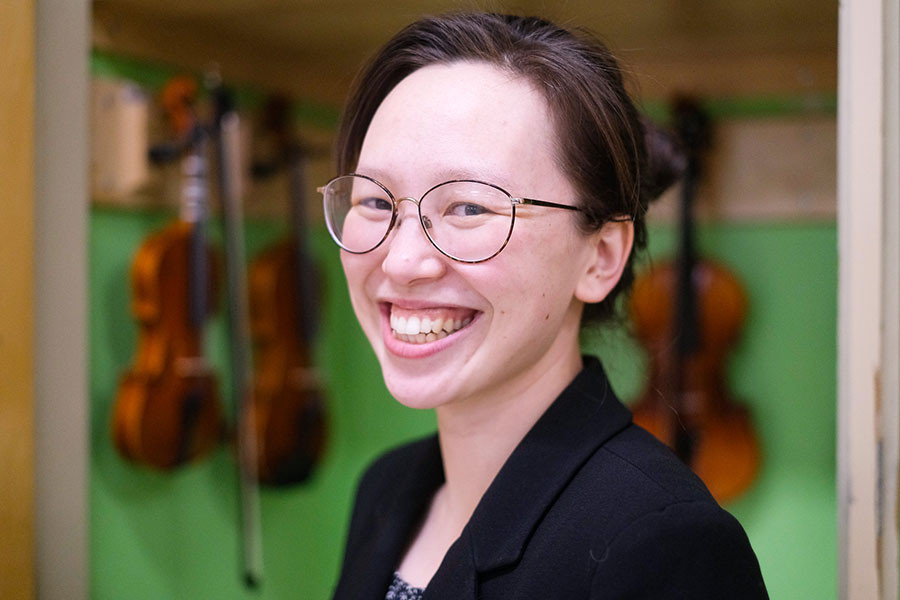
“One problem is that the term ‘classical music’ has come to refer to a body of work that has a feel of being something very coherent, but actually is much more wide, varied and encompassing.”
She notes that “music in the past that was purely sacred or even 15th century troubadour or drinking songs now fall under the realm of classical music, as does grand 19th century opera, as does experimental music from the (1960s).”
Interestingly, classical music is embedded in modern pop culture. While most people may not recognize the titles “Symphony No. 9 in D Minor” or “L’amour est un oiseau rebelle,” many would recognize the melodies.
Woo says that “therefore, to audiences who might be unfamiliar with what is happening in a given program or a given institution, (classical music) can seem like something they don’t know anything about or might not be interested in,” even though audiences may very well enjoy it. The Winnipeg Symphony Orchestra's Sistema Winnipeg program offers free music education for local children whose families can't afford paid lessons. // Photo by Daniel Crump
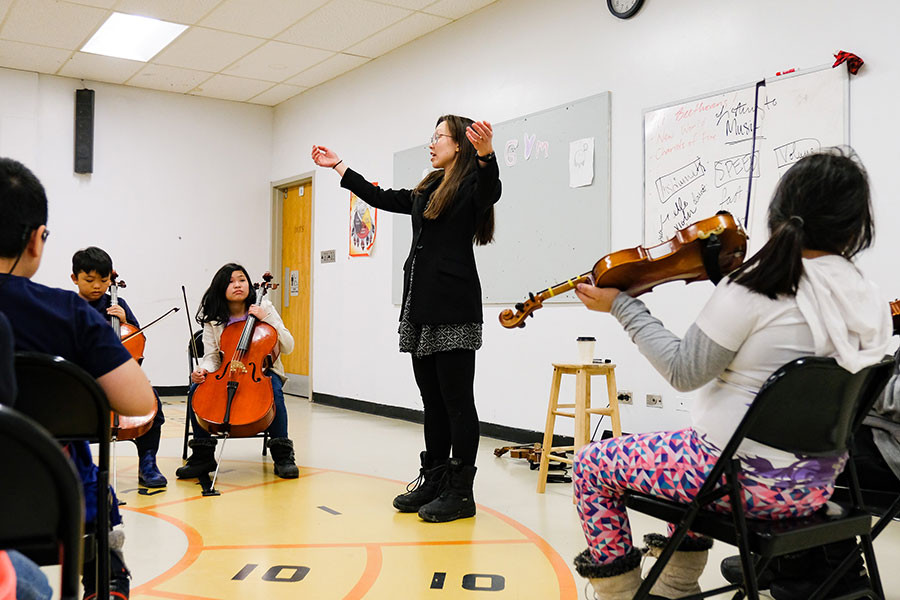
She notes that one of the ways the groups can remind audiences that classical music is about emotions is by “breaking down some of the barriers,” also mentioning that it’s important to ensure that concerts are financially accessible. The WSO’s Soundcheck program offers a season pass to individuals aged 15 to 30 for $85.
Preconceived perceptions of classical music also impact who attends concerts. Sweatman, who has been attending the MCO since he was 18, says its environment is welcoming to all.
“If you come to one of our shows, I don’t think anyone can describe the environment as being pretentious,” he says. The MCO’s tickets for students and those under 30 years old are $15
per concert.
“There are challenges to overcome the historical associations of elitism that surround classical, but, all things considered, I think we do a pretty good job of it in Winnipeg.”
Published in Volume 74, Number 17 of The Uniter (February 6, 2020)

